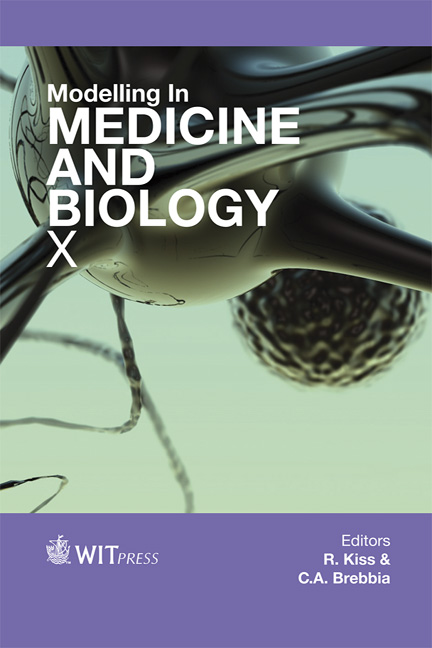Simulation Of Microcrack Growth And Repair In Living Bone
Price
Free (open access)
Transaction
Volume
17
Pages
11
Page Range
193 - 203
Published
2013
Size
753 kb
Paper DOI
10.2495/BIO130171
Copyright
WIT Press
Author(s)
P. Tisbo & D. Taylor
Abstract
The mechanics of how the bone can sustain, accumulate and ultimately repair damage are an important part of biomechanical studies. This work wants to take an analytical approach to the problem, trying to model a system that simulates and predicts the behaviour of microcracks under various conditions of load and other parameters. Materials and methods: this system is built with the Simulink™ suite of the program Matlab™. It is composed of 3 sub models: the first simulates microcrack growth under stress, the second simulates how the damage done by the microcrack is translated into a biological signal and the third mimics the cellular reactions that come into act to repair the damage. Results: the system has been used to mimic what happens during experiments and the results from experiments have been confronted to the outputs from the system. We have compared the number of remaining cellular processes obtained in the simulation with the number observed by using a SEM microscope on the tested specimen to check how the damage signalling subsystem worked. The system has finally been used to predict the cycle of damage accumulation and repair in military trainee during the first weeks of training. Discussion: the results show that the system predicts with good approximation the behaviour seen in the experiments and statistics taken as a reference. The simulated microcracks grow until given sizes and stop like in real bone, where they stop because of the osteons, and only a number of them grow further, usually bringing the bone to failure. The number of cracks that grow beyond this critical size is dependent by factors as stress intensity and the distance between osteons, all modelled in the system. The system is able to simulate the specific effects of diseases and aging on bone fatigue behaviour. Keywords: bone, simulation, microcracks, repair.
Keywords
Keywords: bone, simulation, microcracks, repair.





